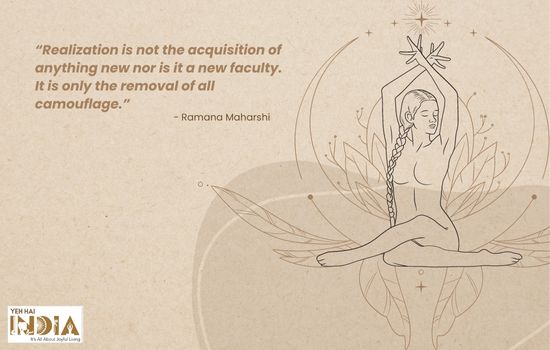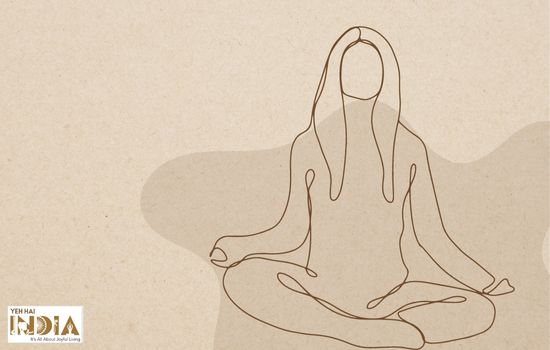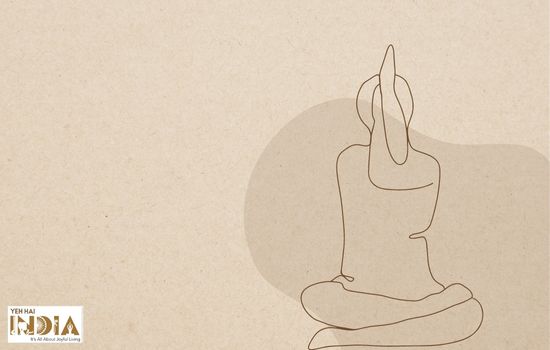Yoga is deeply rooted in spirituality, and many of the poses have deeper goals that extend beyond simple stretching and muscle strengthening.
The practice of yoga is not just a form of physical exercise but also, deeply spiritual in nature. Yoga helps one become aware of one’s body in the beginning stage and upon achieving mastery, it transforms your perception of life completely.
Regulation of the physical body helps you attain awareness and control over emotions and mental state. The control and realisation lead one to attain a level of oneness with the Universal Consciousness.
“Allowing this life to flower into its fullest possibility is what life is about, is what yoga is about, is what spiritual process is about.” Sadhguru
Even though most people pursue yoga training for its physical benefits, the practice of yoga is also beneficial in other ways. Yoga’s holistic effect allows practitioners to improve their emotions, mental health, concentration, physical endurance and agility.
Religion vs Spirituality

Even though the two concepts are different, spirituality and religion have always been confused. While religion is an institutionalised and culturally designed faith system and ideology, spirituality is more of a personal experience that does not preclude religious pursuits.
Spirituality, in the traditional sense, relates to the spirit or soul, which is considered the true inner centre of humans and is also sometimes called pure consciousness.
“Realization is not the acquisition of anything new nor is it a new faculty. It is only the removal of all camouflage.” Ramana Maharishi
Spirituality is a broad and ambiguous concept that can be addressed from conceptual, intellectual, religious, and experiential angles.
It is thought to be a universal phenomenon characteristic to humans and characterised by a search and belief in something sacred outside the physical reality.
Also, it describes the personal perception of understanding what is true, being whole, and also being open to the infinite.
Recommended Story – 6 Yoga Poses For Beginners To Stay Fit By Ira Trivedi
Spirituality in Yoga

The true objective of yoga practice is to realise the oneness of all things which is the revelation that individual consciousness is indeed a part of the cosmic consciousness. This state of awareness is also identified as self-realization or oneness.
Yoga is an ancient science that goes far past the physical to deepen the connection between mind, body, and most importantly, spirit. The spiritual aspect of yoga assists practitioners in developing inner being integration and oneness with the Supreme Consciousness.
How Yoga Brings Concord Between the Mind, Body & Soul

The mind constantly alternates between the past and the future, regrets and hopes and causes steady stress, anxiety and thrills.
The mind is caught in a continuous loop of desires, apprehensions, cravings, fear and aversions. To help resolve mental conflicts, it is of utmost importance to bring the mind to the present.
Yoga purifies both the body and the mind from stored-up negativity and stress. The breathing exercises or Pranayamas calm an anxious mind.
Regular yoga practice will improve your body balance and flexibility, strengthen your body and keeps your mind alert and clear.
Yoga has entwined social, physical, mental, emotional and spiritual meanings and motivations in its practice.
- Physical flexibility results in mental flexibility. Simultaneously, mental flexibility results in body flexibility.
- Stretching to your maximum in yoga poses without comparing yourself to other people leads to an attitude of focusing on what’s important in life. Such an attitude greatly helps in anxiety and stress management.
- Breathing through challenging asanas to help you handle difficult times better.
- Balance, flexibility, and attentiveness achieved on the yoga mat can be seen reflected in actions, responses and attitudes in our daily life as well.
The Seven Spiritual Laws of Yoga
Dr Deepak Chopra, MD in his book, The Seven Spiritual Laws of Yoga: A Practical Guide to Healing Body, Mind, and Spirit proposed seven principles to combine yoga and spirituality.
1. Law of Pure Potentiality

We are all a part of one consciousness which makes us an extension of everything in the physical world.
2. Law of Giving and Receiving

The constant dynamics of this world make it essential for us to give and receive love and abundance and maintain the positivity in the universe.
3. Law of Cause and Effect

Anything we do creates an equivalent return of energy to our lives. We commonly call it karma without realising its importance. The more good we do and the more happiness we spread in the world, the more we will receive back in kind.
4. Law of Least Effort

When we do things we love and pursue something out of love, the effort it requires and the energy it takes to accomplish them feel negligible as there is no internal resistance to such actions. Thus, it means we do less and reap everything.
5. Law of Intention and Desire

Our intentions and desire hold everything essential for their fulfilment. Letting out those intentions into a space of potential without any noise that disturbs their birth, we can rope in the universe’s infinite power to manifest our desires.
6. Law of Detachment

It is the understanding that struggling is not essential for things to work out. As long as actions are taken positively, chances will arise on their own.
7. Law of Dharma

Dharma means a facet of truth or reality. Everyone has a different dharma to realise or fulfil. Whatever our talents or capacities may be, we can in one way or other use them to serve others to spread love and abundance.
You may wonder what this has to do with yoga’s relation to spirituality. These 7 laws can be applied with mindfulness to everyday practice. Understanding how these laws can help improve your life in general will deepen the practice of yoga.
The practice of these 7 laws with yoga includes a tailored group of breathing exercises, postures for balance, strength and flexibility, chakra opening techniques and mindful integration of the body, mind and soul.
Perspective Change in Practitioners

The incentive for yoga practice shifts over time. More often than not, the initial aim of any yoga student is for physical betterment and flexibility but much more substantial psychological and spiritual intentions emerge later.
“If you understand spiritual practice in its true sense, then you can use all twenty-four hours of your day for your practice. True spirituality is a mental attitude you can practise any time.” Dalai Lama
Practitioners who dedicatedly practise yoga seek to discover and become conscious of the inner spirit, both within and without. The inner spirit is our higher consciousness which acts as a motivating factor and reason for all our thoughts and actions.
To be fully conscious of this is a powerful spiritual experience. Yoga brings about this awareness by developing one’s awareness of their physical being and the present during daily practice.
For a yoga session, they say we need to only bring all of ourselves. Practising yoga with complete self-awareness lets one be conscious of their thoughts, responses and reactions.
With this conscious awareness, the mind is transformed permanently to alter the way we live our lives and how we treat and respond to others.
To Summarise:
Finding inner peace is the ultimate goal of a good yoga practice. When we practise yoga with spirituality in perspective, the transformation and awakening of our true self happen automatically.
This entails realising our full potential during our lifetime. Realising our hidden potential allows us to express our spiritual entity in its entirety.
The practice of yoga aimed at total integration includes a particular lifestyle and the practice of compassion and kindness, all of which contribute to the achievement of the above goal.
Working through yoga asanas can make you feel the reverence of the process. The feeling will stick with you throughout the day and even later, such is the strength of the spiritual awareness attained by way of yoga.
Also Read – 5 Yoga Asanas for a Healthy and Happy life










